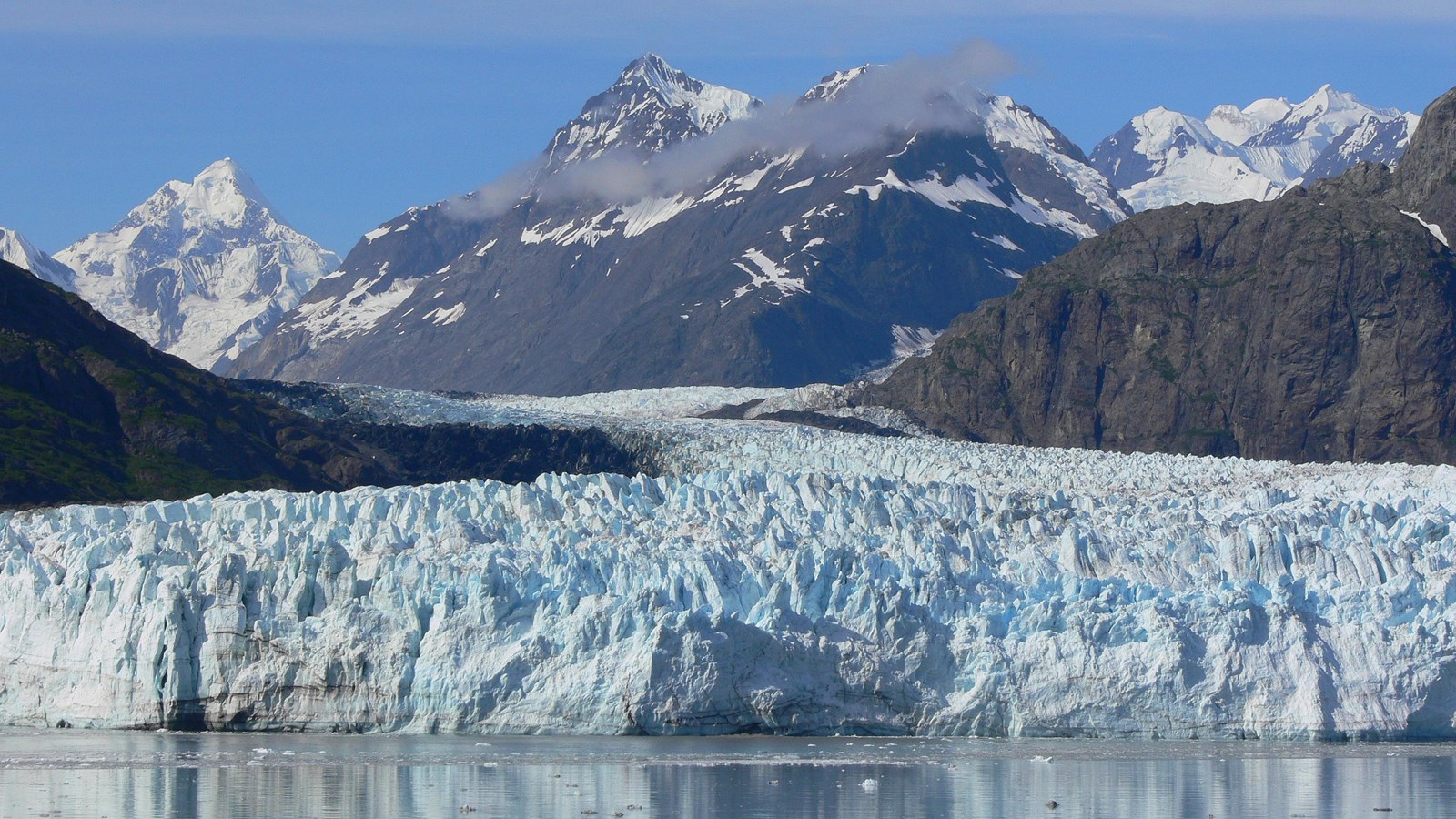Last updated: May 7, 2023
Place
Margerie Glacier

NPS Photo
Margerie Glacier is found at the furthest reaches of Glacier Bay waterway, at the northern reach of Tarr Inlet. The glacier is picturesque in setting, carving a steep valley through towering mountain peaks, and ending dramatically at the edge of the sea. Since it reaches all the way to ocean water, Margerie Glacier is referred to as a tidewater glacier, defined as a glacier that interacts with ocean saltwater. Margerie glacier is about 21 miles long, originating in the Fairweather Mountain Range at elevations exceeding 9000 feet. Due to the abundance of snow in the mountains and the steepness of slope, the ice of Margerie Glacier flows relatively quickly, estimated to flow about 2000 feet per year, or about 6 feet per day. The glacier does not expand out into the fjord since it rests on an underwater ledge, so the ice falls into the ocean in a process called calving, breaking into icebergs. The icebergs become resting spots for harbor seals, sea otters, black-legged kittiwake gulls and other birds.
Where the ocean water is disturbed by meltwater streams and calving icebergs, flocks of black-legged kittiwake gulls swarm and glean small fish from the surface. In recent decades, Margerie’s terminus was relatively stable in position, maintaining an equal balance of ice growth through snow accumulation in the mountains and ice loss due to melting in lower elevations and calving. However, in 1998 the northern third of the terminus began a noticeable recession, forming a small embayment within the ice face.
Over the past several years, this part of the terminus has thinned and the embayment has expanded. In 2017, this section experienced dramatic changes with deep embayments and a large mass of bedrock now exposed. Also of note is new bedrock exposed along the sides of the glacier, as the glacier diminishes in height. Margerie, like all glaciers, changes in response to its environment, local interactions with ocean water, regional influences of snowfall, and global temperature changes. The view of Margerie Glacier is constantly changing, different from moment to moment, sculpted by daily calving and seasonal flow.
